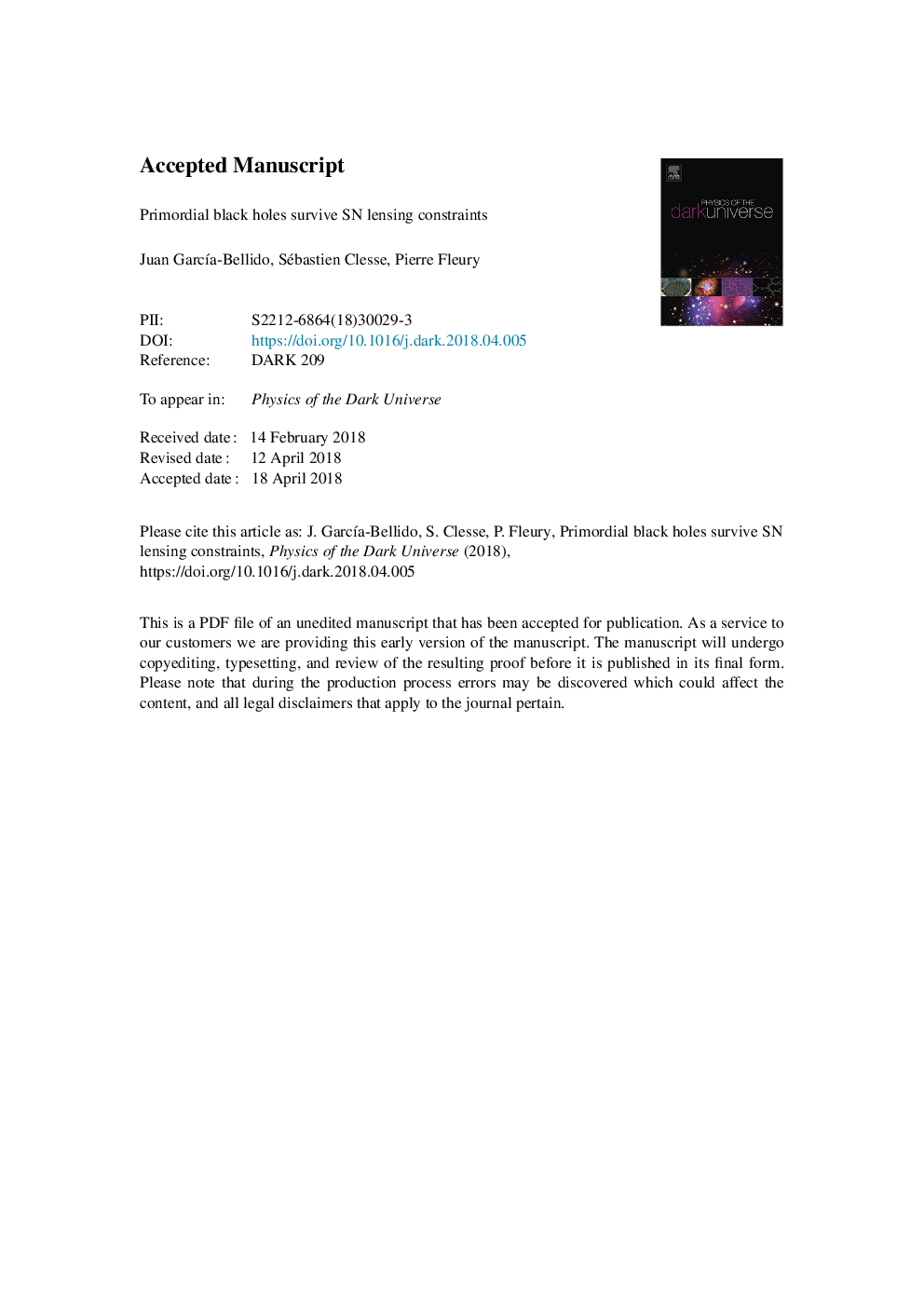| Article ID | Journal | Published Year | Pages | File Type |
|---|---|---|---|---|
| 8141817 | Physics of the Dark Universe | 2018 | 8 Pages |
Abstract
It has been claimed in [arxiv:1712.02240] that massive primordial black holes (PBH) cannot constitute all of the dark matter (DM), because their gravitational-lensing imprint on the Hubble diagram of type Ia supernovae (SN) would be incompatible with present observations. In this note, we critically review those constraints and find several caveats on the analysis. First of all, the constraints on the fraction α of PBH in matter seem to be driven by a very restrictive choice of priors on the cosmological parameters. In particular, the degeneracy between Ωm and α was ignored and thus, by fixing Ωm, transferred the constraining power of SN magnitudes to α. Furthermore, by considering more realistic physical sizes for the type-Ia supernovae, we find an effect on the SN lensing magnification distribution that leads to significantly looser constraints. Moreover, considering a wide mass spectrum of PBH, such as a lognormal distribution, further softens the constraints from SN lensing. Finally, we find that the fraction of PBH that could constitute DM today is bounded by fPBH<1.09(1.38), for JLA (Union 2.1) catalogs, and thus it is perfectly compatible with an all-PBH dark matter scenario in the LIGO band.
Related Topics
Physical Sciences and Engineering
Physics and Astronomy
Astronomy and Astrophysics
Authors
Juan GarcÃa-Bellido, Sébastien Clesse, Pierre Fleury,
